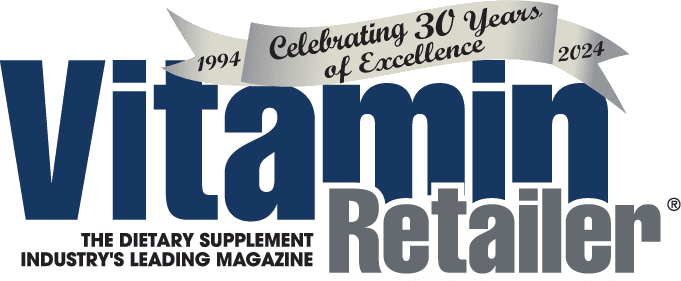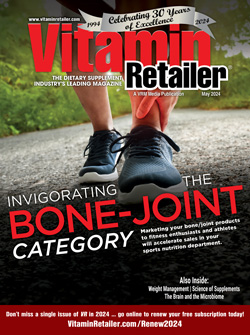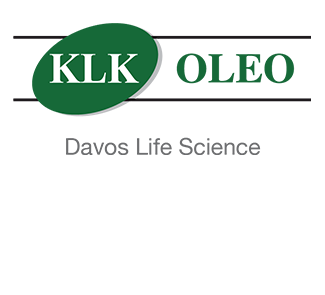4510 S. Boyle Ave.
Los Angeles, CA 90058
Phone: (800) 421-6175 • Fax: (323) 589-6667
Email: information@superiorsourcevitamins.com
Website: www.superiorsourcevitamins.com
Silent Killer, Simple Solution
Ask the average woman to name the most serious health threat to women and she will probably say “breast cancer.” Guys usually think that theirs is “heart attacks caused by high cholesterol.” But both are wrong.
Breast cancer may be top of mind, but heart disease claims more women than the next seven causes combined. Likewise, the billions spent advertising cholesterol-lowering drugs blur the fact that cholesterol numbers are just one controversial aspect of heart health. In fact, half of those who die from heart attacks had normal cholesterol! High cholesterol is “associated” with increased incidence of heart attacks. However, “associated with” is not a causal relationship. It only means that the two factors often appear together—like fire trucks and house fires. The real question is “why does cholesterol go up?”
The body uses cholesterol to make hormones and vitamin D. It is also a repair molecule, and many experts believe that cholesterol is the “fire truck” at the scene of the blaze (damage to arteries). Smoking, heavy metals, environmental chemicals and toxins released by bacteria in our gums are a few suspected causes of the damage. Cholesterol itself can become an irritant if oxidized and not restored by antioxidants like vitamin E. A big, under-recognized cause of inflammation damage to the blood vessels is homocysteine.1
Homocysteine is a naturally occurring amino acid that is a breakdown product of the essential amino acid, methionine. Homocysteine elevation is linked to cancer and is a cause of deep vein thrombosis, stroke (even in young women), as well as reduced physical performance in older women. The concept of homocysteine as a “cardio bad guy” has been investigated since at least 1969, with Harvard researcher Dr. Kilmer McCully pioneering the field. We know that, as blood levels of homocysteine rise, the risk of developing severe coronary heart disease rises proportionately. In one study, women with the highest homocysteine measurements (the top 10 percent) had 2.3 times the heart attack risk of women in the lower half of the scale. (The women with high homocysteine levels also tended to have low folic acid levels.)
Normally, homocysteine is converted into a harmless amino, cysteine, or back into methionine. Gluten sensitivity may increase homocysteine buildup, but the usual problem is low B vitamins. Most nutrition-savvy doctors recommend supplementing with folic acid to help homocysteine normalize, as well as B6 and B12 for their well-documented fringe benefits. Folic acid is crucial for proper cell division and so helps prevent cancer and neural tube birth defects. Low folic acid may account for 40 percent of cases of autism.2
Supplementing B12 with folic is important in part because high blood levels of folic acid can make it harder to detect a vitamin B12 deficiency in routine blood tests. Also, in her book Could It Be B12?: An Epidemic of Misdiagnoses, Sally M. Pacholok, RN said B12 deficiency “afflicts one person with tremors, makes another depressed or psychotic, and causes agonizing leg and arm pains or paralysis … can mimic Alzheimer’s disease, multiple sclerosis, early Parkinson’s disease, diabetic neuropathy or chronic fatigue syndrome. It can make men or women infertile or cause developmental disabilities in their children … it lurks silently, stealthily increasing its victim’s risk of deadly diseases ranging from stroke and heart attacks to cancer.”
Vitamin B6 has dozens of textbook roles including helping nerve function, forming red blood cells and utilizing amino acids. It is often employed to reduce PMS symptoms. Stumbling blocks to achieving B vitamin sufficiency include:
1. Lack of awareness of the importance.
2. Poor diet.
3. Supplement absorption—especially with the elderly. Stomach acid is required to produce vitamin B12 and seems needed for adequate folic acid absorption, too. Those past middle age may already have reduced stomach acid and acid-blocking heartburn drugs make matters worse.
4. Compliance—people do not like to swallow pills.
Hopefully, retailers can help with No. 1 and 2. I solve No. 3 and 4 with my clients by recommending Superior Source’s No-Shot Advanced MicroLingual B12/B6/Folic Acid. The tiny pellets dissolve almost instantly and allow the nutrients to go right into circulation under the tongue. Furthermore, B12 is in a meaningful dose, 2,000 mcg and in its preferred active forms, methylcobalamin and adenosylcobalamin (dibencozide). Likewise, B6 is pyridoxal 5′-phosphate. No bulky pills to swallow and the tabs taste great.
References:
1 McCully KS. Hyperhomocysteinemia and arteriosclerosis: historical perspectives. Clin Chem Lab Med. 2005;43(10):980-986.
2 Surén P, et all.Association between maternal use of folic acid supplements and risk of autism spectrum disorders in children. JAMA. 2013 Feb 13;309(6):570-7. doi: 10.1001/jama.2012.155925.








